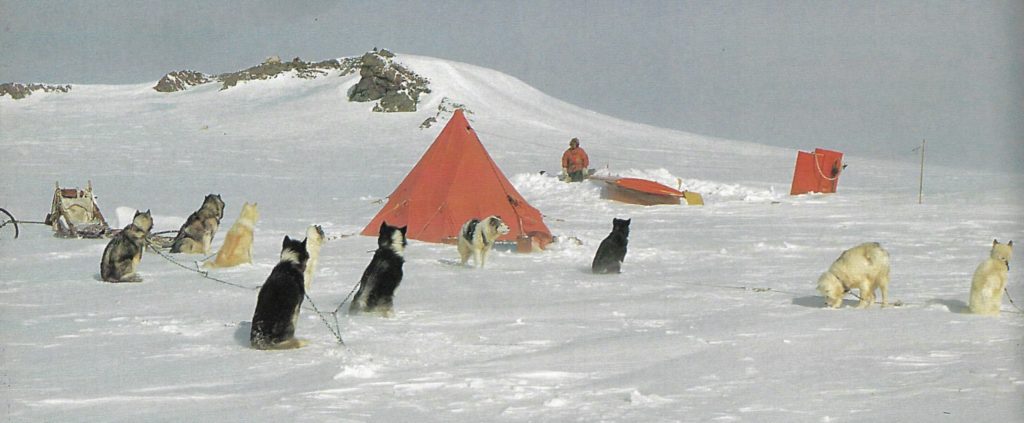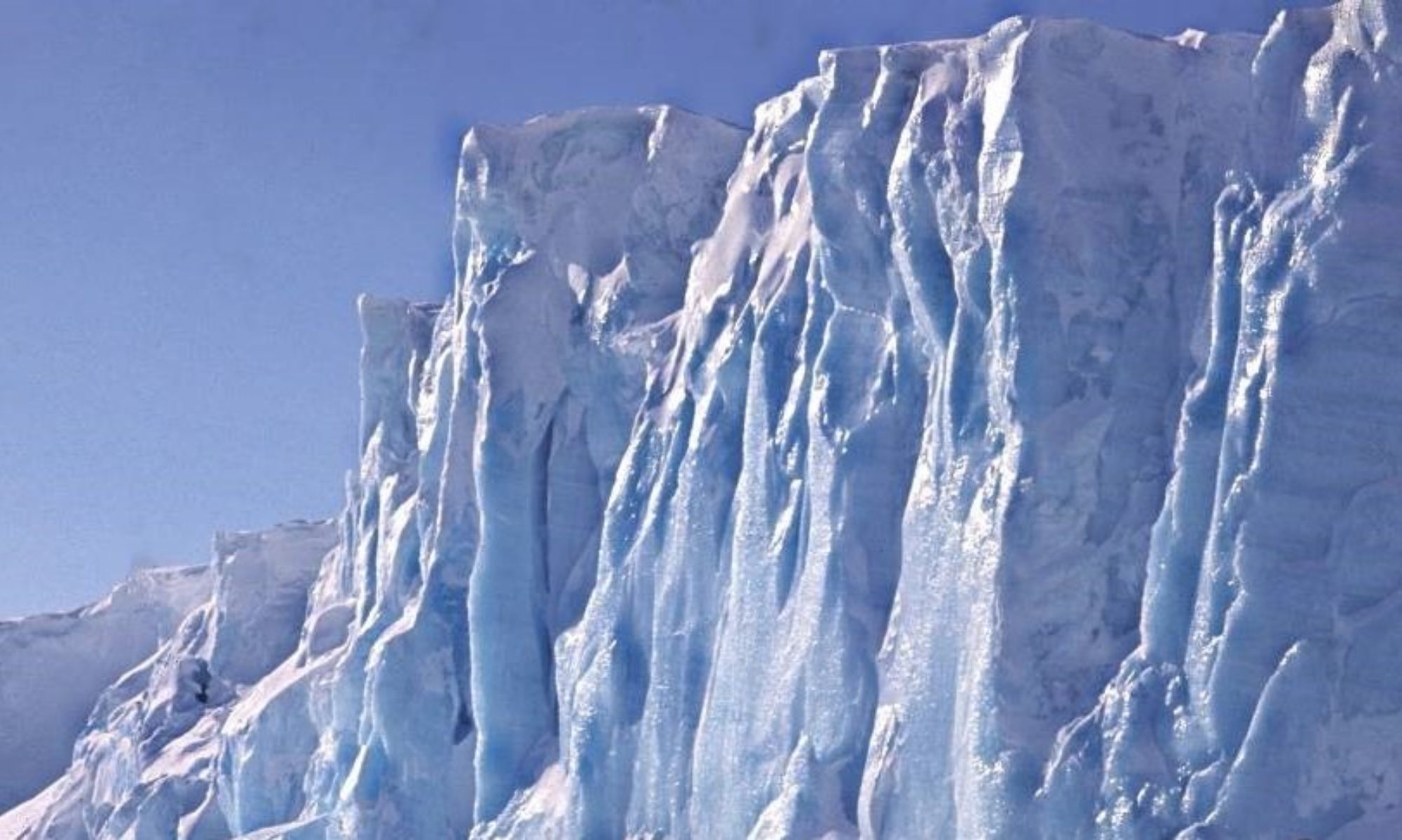The Players at the Bluff (continued)
This was the first occasion which dogs had overwintered at Fossil Bluff and there was concern over the possible effects of the longterm absence of meat in their diet. In the event they showed little evidence of deterioration after 9 months of Nutrican supplemented by vitamin tablets and kitchen scraps.
In the ensuing 9 months the presence of the dogs provided an effective antidote to the adverse effects of enforced incarceration, and there is little doubt that they played a major part in us retaining our sanity. For a start, feeding, exercising and general attention meant that we had to get out of the hut every day no matter what the weather was like. They also provided us with the means of getting away for short ‘holiday’ periods or for checking depots or route finding. More importantly they enabled me to continue my geological surveys as otherwise my mental state, not to mention that of the others would have deteriorated rapidly.
Whilst at Fossil Bluff my lead dog Nova produced two pups, Puna and Chow which provided further distraction and plenty of amusement. The usual and not so usual veterinary problems also kept our minds occupied. The first and potentially most serious of these concerned Coll, one of the older dogs. After a fight in which he received a bite on his back he was unable to lift his hind quarters the ground. Not having a gun with us we couldn’t put him down which was perhaps fortunate as the problem eventually disappeared. He subsequently became very emaciated so we made him a sheepskin coat which he wore with pride! Later in the year we attempted to surgically remove sections of Brutus’ tail which had been damaged in a fight. As we failed to sufficiently anaesthetise the relevant parts the operation was abandoned and the damaged sections decayed naturally.
The dog carrying Maudheim was a typical bit of FIDS innovation in response to a logistical problem. In essence we had been asked to lay a depot for the following year’s geophysical programme in southern Alexander Island. Although we had two Muskeg tractors at Fossil Bluff a shortage of fuel meant that we could only use one. Whereas much of the route was over shelf ice in George VI Sound and hence could safely be traversed by a single tractor, the last 10 miles or so involved crossing pressure at the edge of the shelf and travelling over possibly crevassed glacier ice which in the circumstances necessitated taking dogs. However, it was then recognised that the most fuel efficient speed of the tractor was in excess of that of the dogs which would result in the two units rapidly becoming separated. For safety reasons this was considered undesirable, so it was decided to build an experimental dog carrying sledge.
The basis for this was a Maudheim cargo sledge on which was spread a large tarpaulin. Two 45 gallon oil drums were placed at the front of the sledge and two Nansen sledges without handlebars and on their sides formed the sides. These were secured to the Maudheim by lashing and then the tarpaulin was wrapped over the tops of the Nansens.
Our main concern was that the dogs would react adversely to being in such close contact. Certainly on the trial run they were very suspicious and it was evident that Cap and Angus would require sedation. However, when it came to the real thing, providing they had first been taken for a run to get rid of surplus energy, the dogs accepted it and indeed became quite enthusiastic about it, evidently realising that this was an easy way to travel. Not stupid those dogs!
Fights were effectively prevented by ensuring that the dogs were constantly supervised, with each of us taking turns on the Maudheim. As it happens, and perhaps not surprisingly the only recorded ‘punch up’ was when they were being looked after by the one member of the party who normally took little interest in them.
The use of the dog carrying sledge on the depot laying trip was an unqualified success, so much so that used it on a subsequent geological outing to Carse Point.
Graham Smith, Geologist, Fossil Bluff 1968

Six months later, they revisited the site of the crash, and in the picture above, the Vikings are seen watching with some interest as their two-legged counterparts try to retrieve goodies from a fast-disappearing aircraft.
Ian Sykes, GA Stonington 1968 & 1969
